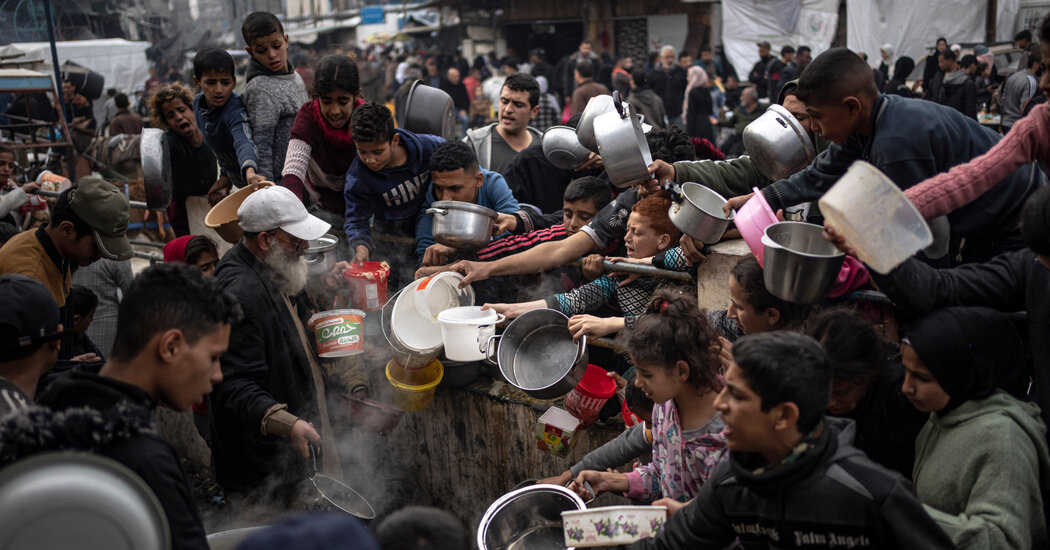
U.N. Experts Say Gaza Is Close to Famine. What Does That Mean?
The aid delivery that ended in bloodshed this week showed the extent of Gazans’ desperation, with dozens killed after many thousands converged on a rare convoy of aid trucks. As the number of aid deliveries into Gaza has rapidly dropped and Palestinians struggle to find food, humanitarians and United Nations officials are warning that famine is imminent in the enclave.
For aid groups and the U.N., officially determining that a famine exists is a technical process. It requires analysis by experts, and only government authorities and top U.N. officials can declare one.
So how is famine defined, and what do experts say about the severity of hunger in Gaza? Here’s a closer look.
What is a famine?
Food insecurity experts working on the Integrated Food Security Phase Classification, or I.P.C., an initiative controlled by U.N. bodies and major relief agencies, identify a famine in an area on the basis of three conditions:
-
At least 20 percent of households face an extreme lack of food.
-
At least 30 percent of children suffer from acute malnutrition.
-
At least two adults or four children for every 10,000 people die each day from starvation or disease linked to malnutrition.
Since the I.P.C. was developed in 2004, it has been used to identify only two famines: in Somalia in 2011, and in South Sudan in 2017. In Somalia, more than 100,000 people died before famine was officially declared.
I.P.C. analysts expressed grave concern about food insecurity in Yemen and Ethiopia, related to the civil wars in those countries, but said not enough information was available from governments to issue a formal assessment.
The classifications of famine in Somalia and South Sudan galvanized global action and spurred large donations. Aid workers and hunger experts point out that the hunger crisis in Gaza is already dire, with or without a famine classification, and aid is needed quickly.
